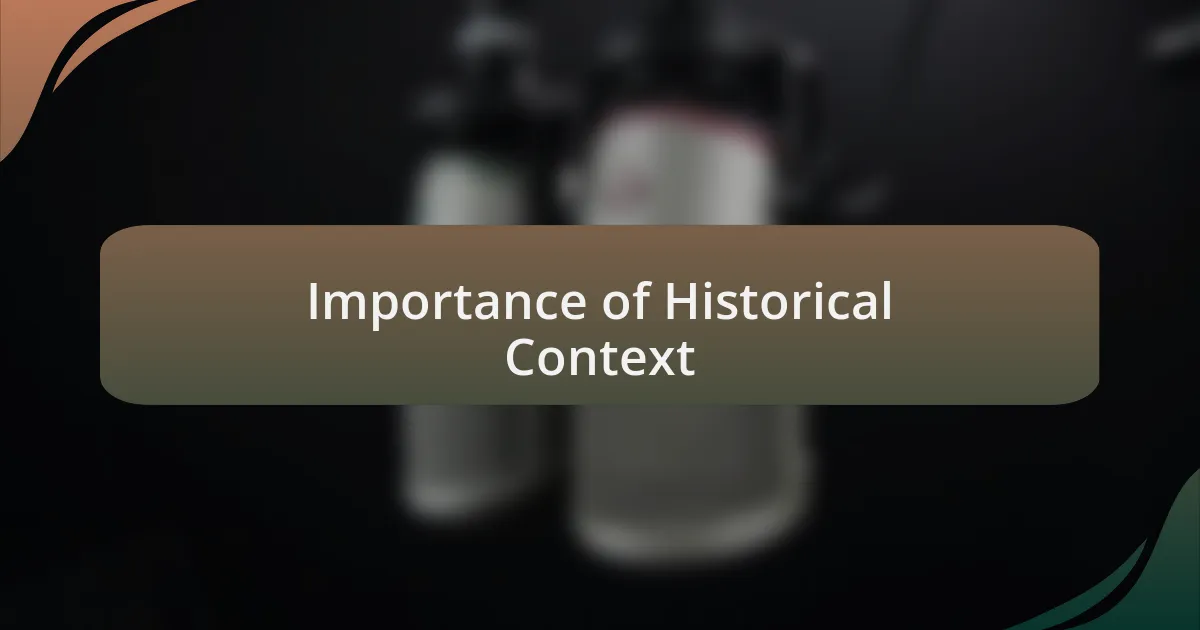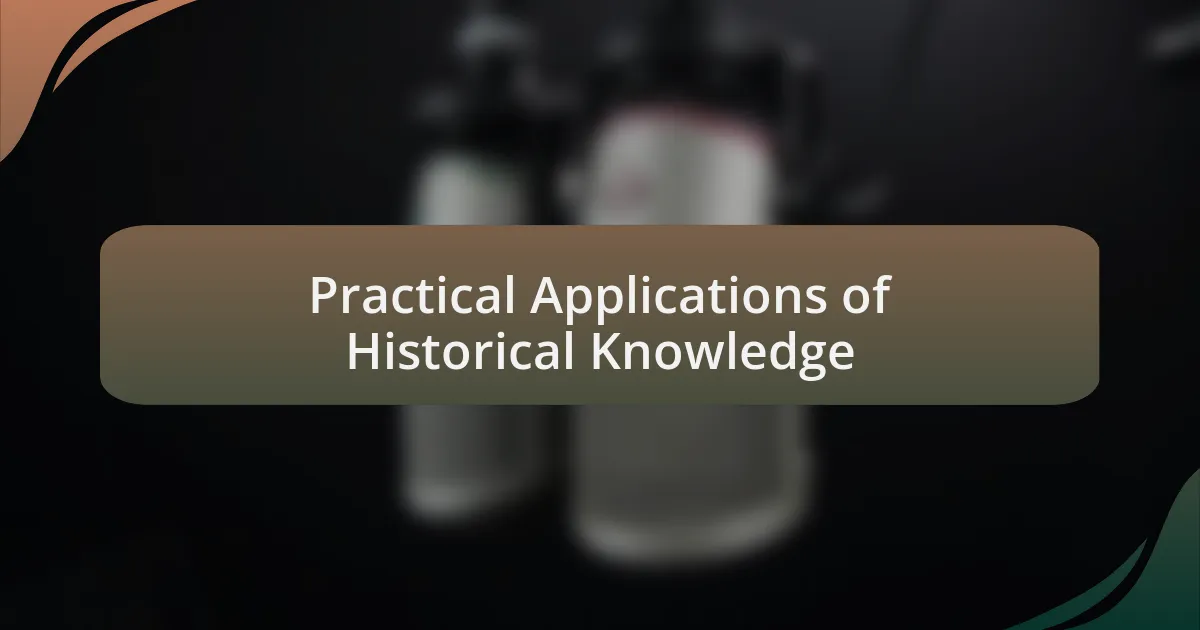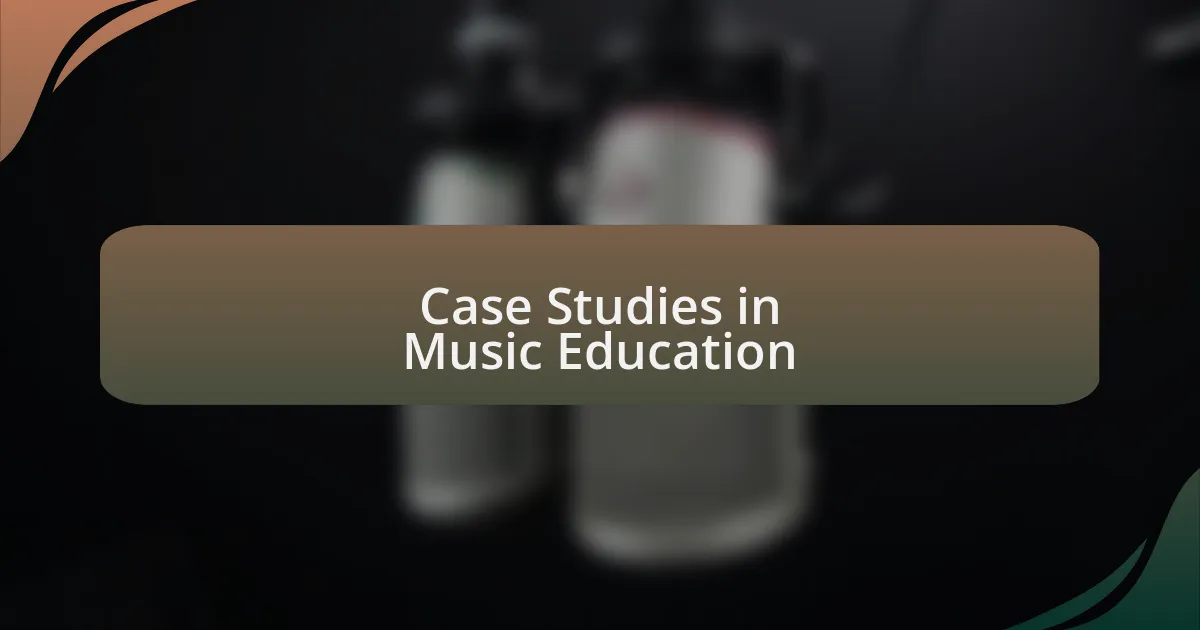Key takeaways:
- Music education fosters self-expression and creativity, connecting lessons to students’ experiences and emotions.
- Understanding historical context enriches students’ appreciation of music by revealing its cultural and societal significance.
- Integrating history allows students to relate music to real-world issues, nurturing empathy and critical thinking skills.
- Case studies illustrate the profound connections between music and historical events, highlighting music’s role as a narrative of human experience and resilience.

Understanding Music Education Basics
Music education is a journey that opens up a world of possibilities. Think back to the first time you held an instrument or sang in a choir—did you feel that spark of joy? For many of us, those early experiences lay the groundwork for a lifelong appreciation of music.
In my teaching experience, I’ve noticed that understanding music education basics goes beyond notes and rhythms. It’s about fostering a love for music and encouraging creativity. How can we help students see music as a form of self-expression rather than just a subject to study? I believe that by connecting lessons to their experiences and emotions, we create a rich learning environment.
Moreover, integrating historical context in music education helps students grasp the evolution of styles and genres. For instance, when I introduce students to jazz, I share stories of its roots in the African American experience. This not only informs them about the music but also enriches their connection to it, creating a more profound appreciation that lasts a lifetime.

Importance of Historical Context
Understanding the historical context of music is crucial because it reveals the stories behind the sounds we love. I often reflect on how learning about the cultural movements that shaped a particular era can transform a student’s perception of music. When my students discover that Beethoven was often at odds with the changing political landscape of his time, it’s like a light bulb goes off—music suddenly becomes a narrative filled with emotion and struggle.
Furthermore, historical context provides a framework that deepens our comprehension of musical techniques and styles. For instance, when teaching about the Baroque period, I find it incredibly effective to explain how the complexity of that music mirrors the intricacies of society during that time. Isn’t it fascinating to think that every trill or ornamentation was not merely about sound but also a reflection of the composer’s experiences and environment?
Ultimately, integrating historical context nurtures empathy and critical thinking in students. I remember a particular lesson where discussing protest songs from the 1960s led to a passionate debate about social justice. Watching my students connect music to real-world issues highlighted the power of historical awareness in fostering not just musicians, but informed citizens. How can we ignore these connections when they offer such rich, meaningful engagement with music?

Integrating History in Curriculum
When integrating history into the music curriculum, I often draw parallels between significant historical events and the music of those times. For example, while teaching about the Harlem Renaissance, I introduce my students to jazz not just as a genre, but as a cultural expression born from resilience and innovation. I’ve seen students’ faces light up when they realize that artists like Louis Armstrong or Duke Ellington were not just musicians but also voices of their communities during a pivotal time in American history.
I strive to make history feel alive in the classroom. One day, while discussing the impact of the French Revolution on classical music, a student posed a question that struck me: “How did the struggles of the common people influence the beauty of the music we hear?” This question sparked a spirited conversation that connected the dots between societal upheaval and creative expression. It reinforced my belief that integrating historical context isn’t just an add-on; it transforms how we engage with music at a deeper level.
Moreover, I recognize that weaving historical narratives into lessons provides a richer tapestry for understanding music’s evolution. For instance, when I introduce the significance of folk music in various cultures, I emphasize that these songs often reflect collective memories and histories of communities. This approach not only captivates students but also encourages them to appreciate the diversity of musical traditions and the stories that underpin them. In what ways do our own life experiences shape our musical tastes? Engaging with history helps students explore their own connections to music more meaningfully.

Practical Applications of Historical Knowledge
When I incorporate historical knowledge into lessons, I often encourage students to explore how music serves as a reflection of societal changes. For example, while discussing the Civil Rights Movement, I have students listen to songs like “A Change is Gonna Come” by Sam Cooke. Their reactions often reveal a powerful realization: they can feel the urgency of the message and connect emotionally to the struggles of that era, heightening their understanding of both the music and its historical context.
In another instance, I asked my students to consider how the music of the 1960s was a soundtrack for rebellion and change. As we analyzed Bob Dylan’s lyrics, I observed students connecting their personal struggles with those expressed in the music of the time. This connection illustrates how historical context can empower students to see themselves within the narrative of music, making the subject more relatable and impactful.
It’s fascinating to see students uncover the influence of historical events on composers like Beethoven, whose work was produced during times of upheaval in Europe. Once, one student remarked, “It’s like he was composing the emotions of his time!” This comment led us into a deeper exploration of how personal and political experiences shape artistic expression, reinforcing my belief that integrating historical knowledge not only enriches music education but also nurtures a deeper understanding of human experience.

Case Studies in Music Education
To truly appreciate the significance of music education in various historical contexts, I often turn to case studies that showcase real-world applications. One that stands out is when I encouraged my students to study the works of jazz musicians during the Harlem Renaissance. As they listened to tracks from Duke Ellington and Louis Armstrong, I asked them to consider how jazz was not just music, but a form of resistance and cultural assertion. Their eyes lit up as they began to realize that each note held stories of ambition, struggle, and triumph, making the lesson not just about music, but about resilience and identity.
Another memorable case study involved examining the role of music in wartime. I vividly recall a discussion about the music of World War II, where we delved into songs like “We’ll Meet Again” by Vera Lynn. I could see my students’ expressions shift as they contemplated the bittersweet hope behind the lyrics. “What do these songs mean for those waiting for loved ones?” I asked, and they responded with heartfelt reflections on longing and separation. These discussions made history feel alive for them, as they could connect deeply with the emotions portrayed through music.
Lastly, I explored how contemporary artists draw inspiration from historical events. For example, while studying Kendrick Lamar’s “Alright,” I asked my students to reflect on the socio-political issues he addresses. I remember one student saying, “It’s like he’s speaking directly to our struggles today!” This acknowledgment of continuity between the past and present reinforced their understanding of music as a living dialogue that transcends time. Through these case studies, I’ve seen students not just engage with music, but with the very fabric of history itself, fostering a richer, more empathetic view of the world around them.

Personal Reflections on Teaching
Reflecting on my teaching journey, I often find myself in awe of the transformative power of music. One particular moment stands out: while discussing folk songs, I asked my students to share what traditions or stories their families passed down. The exchange was profound; one student spoke about her grandmother’s tales of migration, weaving a narrative that resonated with everyone. It struck me how music can serve as a vessel for personal and cultural history, illuminating paths we walk today.
I also remember a time when I introduced my class to protest songs from the Civil Rights Movement. I posed the question, “What does it mean to take a stand?” The discussions that followed were nothing short of inspiring. Many students expressed a newfound sense of agency, recognizing their voices as powerful tools for change. I realized that by integrating historical context into our lessons, I wasn’t just teaching music; I was nurturing their potential to engage with societal issues meaningfully.
Sometimes, I worry about whether I’m adequately preparing my students to connect with the rich tapestry of music history. Yet, moments like seeing them connect the dots between past injustices and contemporary movements give me hope. When a student raises a hand and shares their perspective, questioning how history informs our present-day choices, I feel a deep sense of fulfillment. It reminds me that teaching is not solely about imparting knowledge; it’s about awakening critical thinking and fostering a sense of belonging within the broader narrative of our society.